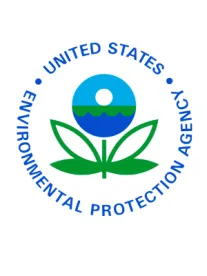EPA Administrator Scott Pruitt has announced a set of Task Force recommendations that are aimed at improving the Superfund program. The Agency’s adoption of these recommendations is another indication that demonstrable change to CERCLA implementation is of interest to the Trump administration. It follows the EPA Administrator’s May 9 retraction of certain remedy selection authority from regional offices.
The 42 recommendations are contained in a report developed over the space of a month by a task force appointed by Administrator Pruitt. The recommendations are presented as an ambitious attempt to reorient the Superfund program, and a key aim is accelerating action on Superfund mega-sites. The report particularly emphasizes expediting cleanups and promoting redevelopment and community revitalization. The recommendations will require aggressive work from EPA staff to meet the schedules provided in the report.
The report closely follows key themes that the Administrator has previously emphasized: rapid, efficient implementation of CERCLA cleanups; a hands-on approach from EPA senior management for key Superfund mega-sites; and efforts to leverage the program to enhance site “reuse” and brownfields / community redevelopment.
Among the strategic initiatives identified for quick action are:
-
Sites Showing Insufficient Progress. The report recommends developing a list of NPL sites that are not showing sufficient progress toward cleanup / completion, and then accelerating progress on the targeted sites. The Administrator likely will be looking for quick success stories in selecting the “top 10 list” and a similar top 20 list for best redevelopment opportunities. He has already asked the regional offices to start compiling information that may be used to develop these lists. The impact of this initiative will likely vary from site to site. For some sites, enhanced attention from the Administrator may provide an opportunity for greater efficiency and moving more quickly toward completion. For others it may provide unwanted attention.
-
Adaptive Management. The recommendations appear to promote the increased use of adaptive management strategies for major sites. Adaptive management is not new in the Superfund context. The recommendations appear to focus on possibilities for using adaptive management strategies at the front end of mega-site cleanups, especially when focusing on early action remedies to reduce quickly the risks at a site. Such a strategy would fit well with the Administrator’s emphasis on efficient cleanups, but would not necessarily solve some of the problems associated with the longer-term wrap up and closure of larger sites.
-
Creating Oversight Efficiencies. At the more complex or larger sites, the magnitude of oversight costs for EPA, and for affiliated state and tribal reviewers, can seem disproportionate to some PRPs. The report’s recommendations indicate that EPA may be willing to consider using oversight cost reduction or forgiveness as an incentive for meeting deadlines, conducting early action activities, or other good policy objectives. The recommendations also reference the possibility of using third party oversight and / or single reviewer designations to decrease costs. EPA is targeting FY 2018 for moving forward on these initiatives. EPA may also look for ways to pass oversight authorities to states.
-
Support for Private Party Redevelopment. The report also incorporates a private party redeveloper emphasis, seeking to stimulate community redevelopment and site re-use. The recommendations signal the potential availability of funding and improved liability protections for redevelopment sites – and a possible return to initiatives that have lost some steam in recent years. Movement on these recommendations could lead to significant improvements in the availability of pre purchaser comfort letters that would represent a material improvement in protections for such property purchasers and developers.
Most of the recommendations are scheduled for implementation within 30 to 180 days, so the fast time frames imposed for multiple deliverables may be the most significant element of the report. Several recommendations require establishing working groups, reaching out to PRPs for feedback on site redevelopment, preparing policy memos, or coordinating with the Department of Justice to create model documents to speed up settlement. These activities will need to occur on very tight timelines to meet the Administrator’s goals.
The recommendations would not alter the fundamentals of the CERCLA program, but could lead to flexibility on targeted issues and may lead to useful incentives for participation and private party investment for redevelopment. The most immediate impact, however, would likely be felt at sites selected for the “top 10 list” or those selected as pilots for new policies. Since many of the recommendations require additional policy development and implementation tasks, it is difficult to determine which recommendations may be realized.
With recommendations that span multiple topics and a short timeframe, there should be much news about program developments over the coming months. Going forward, PRPs should follow closely the policy development and may watch for opportunities for comment and for participation in pilots, two types of PRP input that could help to shape some of the recommendations into useful and effective modifications.






 />i
/>i

